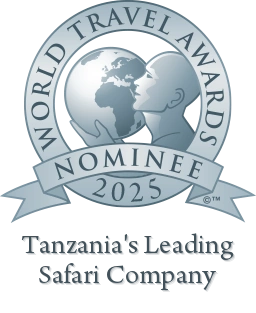Choosing the best time to climb Mount Kilimanjaro can shape your entire experience. Located in Tanzania, this majestic mountain attracts thousands of trekkers each year hoping to reach Uhuru Peak. The right season means better summit weather, safer trails, and a higher chance of success.
As someone who’s helped countless travelers plan their Kilimanjaro Climb, I can tell you—there’s no one-size-fits-all answer. It all depends on what kind of experience you’re after, and this guide will walk you through exactly what to expect each month.
Kilimanjaro Climbing Seasons – Dry vs Wet
Kilimanjaro’s climate changes throughout the year, and knowing when the mountain stays dry or gets soaked helps you plan a better climb. The mountain offers two main trekking seasons: dry and wet. While you can climb year-round, weather, rainfall, and temperature shifts play a big role in the kind of experience you’ll get.
The dry season, from June to October and again in January and February, brings clear skies, crisp air, and firm trails. These months attract the most climbers because they create the best conditions for trekking and summiting. You’ll enjoy better visibility, lower chances of rain, and steady temperatures—especially helpful when you’re adjusting to altitude.
During the wet seasons—March to May and November—the mountain sees more rain, particularly in the lower rainforest zone. Trails get muddy, clouds roll in, and views often disappear. Still, some trekkers embrace the challenge to enjoy quieter routes and lush, green scenery. If you prefer solitude and don’t mind wet boots, you can still have an unforgettable climb during the rainy months.
Month-by-Month Guide: When to Climb Mount Kilimanjaro
Every month on Kilimanjaro offers something different. Let’s break it down so you can pick your perfect climbing window.
January & February – Warm and Clear
- Weather: Warm days, cool nights, and mostly clear skies
- Crowds: Moderate, with fewer climbers than in July or August
- Trail Quality: Dry and firm, ideal for a steady pace
- Best Routes: Machame, Lemosho, and Marangu all perform well
- Summit Visibility: Clear and wide views most mornings
Trekking Tip from Me:
If you want clear weather without overwhelming crowds, I always recommend January or February—they strike the right balance.
March to May – Long Rains and Low Crowds
- Weather: Consistent rainfall, especially in April
- Crowds: Very low; you’ll often hike in total peace
- Trail Quality: Muddy and slippery, especially below 3,000 meters
- Best Routes: Rongai and Northern Circuit stay drier than others
- Summit Visibility: Frequently reduced by fog and clouds
Trekking Tip from Me:
I only suggest this season for experienced trekkers. Bring waterproof layers and expect unforgettable solitude.
June to October – Peak Dry Season
- Weather: Crisp, dry, and reliable—perfect for trekking
- Crowds: Very high, especially in July, August, and early October
- Trail Quality: Excellent; dry and compact from base to summit
- Best Routes: All routes are open and popular
- Summit Visibility: Exceptional—often cloud-free mornings and evenings
Trekking Tip from Me:
If this is your first time, climb in July or August—but book early. These months offer the best summit success rates.
November – Short Rains but Less Busy
- Weather: Occasional showers, mostly in the afternoon
- Crowds: Lower than peak season; quiet but not empty
- Trail Quality: Slightly wet but manageable with good boots
- Best Routes: Northern Circuit and Rongai handle rain better
- Summit Visibility: Decent; expect clearer views in the morning
Trekking Tip from Me:
I recommend November if you’re flexible and want to avoid crowds. Just pack for rain and hike early each day.
December – Festive Climbing Season
- Weather: Mixed; light rain early, clearer skies later
- Crowds: High during Christmas and New Year holidays
- Trail Quality: Variable—dry in some areas, slick in others
- Best Routes: Machame, Lemosho, and Marangu are in high demand
- Summit Visibility: Strong chance of clear skies near month’s end
Trekking Tip from Me:
Many climbers want to summit on New Year’s Day. I always advise booking this climb at least six months ahead.
Best Kilimanjaro Routes by Season
Choosing the best Kilimanjaro route by season depends on weather, trail conditions, and your personal trekking goals. Some routes perform better during the dry season, while others offer reliable access year-round.
Machame Route (June–October)
Machame Route remains a favorite during the dry season. The trail stays scenic, stable, and well-maintained throughout the climb. It offers strong acclimatization and high summit success. Crowds increase in peak months, but the route handles traffic well.
This is one of the top dry season Kilimanjaro routes for first-time trekkers looking for great views and challenge.
Lemosho Route (January–February, June–October)
Lemosho Route offers an excellent mix of low crowds, strong acclimatization, and stunning scenery. It performs especially well in both dry seasons—January to February and June to October. The longer duration supports gradual altitude gain.
For those who want a scenic and quiet experience, this is often the best Kilimanjaro route by season.
Northern Circuit (Great for Wet Season)
The Northern Circuit route handles rain better than others due to its drier, more sheltered trail sections. It avoids high-traffic areas and gives more time to adjust to altitude. This makes it a smart choice during the wet season or shoulder months.
If you’re climbing in March, April, May, or November, consider this your top route.
Marangu Route (Short & Popular)
Marangu offers hut accommodation and a quicker itinerary. It’s popular for those with less time or less trekking experience. Best taken in the dry season, since heavy rains make its downhill return path slippery.
This route suits those seeking comfort and convenience during stable months like July, August, or January.
Rongai Route (Good for Shoulder Months)
Rongai starts on the drier northern side of Kilimanjaro. It’s ideal in March, early November, or other transitional periods. This route stays quiet and dry when southern trails get muddy.
It ranks as one of the most reliable dry season Kilimanjaro routes, especially during off-peak times.
Weather, Altitude & Summit Success Rates
Weather plays a key role in how your body adapts to the high-altitude conditions on Kilimanjaro. It influences acclimatization, your summit night experience, and your overall success rate.
Weather and Acclimatization
Kilimanjaro’s weather significantly affects how you adjust to altitude. Dry seasons provide more stable conditions, aiding easier high-altitude trekking and summit attempts. In contrast, the wet season brings more challenging conditions like slippery trails, cloud cover, and lower temperatures. These factors increase physical strain, making acclimatization more difficult.
Cold vs Warm Seasons
Summit night conditions differ greatly between cold and warm seasons. During warm seasons like January or February, temperatures remain manageable, aiding both physical movement and restful sleep. This enhances your chance of summiting. On the other hand, cold seasons often make summit night more physically taxing, requiring extra layers of clothing and mental resilience. Cold weather can weaken your body’s response to the low oxygen levels at high altitudes.
Summit Success Rates
Summit success rates vary based on the time of year and route taken. Climbers face higher success rates in dry seasons like June to October, thanks to clear skies and better oxygen levels. In contrast, climbing during the wet season reduces the chance of success due to tough conditions, slower pace, and fatigue. Most summits occur with slow and steady acclimatization, particularly when climbing on routes with better altitude profiles.
Read More : Training to climb mount Kilimanjaro
Crowds, Costs & Booking Availability
Your choice of when to climb Kilimanjaro affects not just weather, but also crowds, cost, and trip planning. Timing your climb well makes a big difference in your experience and budget.
Busy Months and High Demand
June to August and December mark the Tanzania high season for climbing Kilimanjaro. During these months, the mountain gets crowded, especially along popular routes. These dates align with global holidays, so expect higher prices and limited availability. If you aim for the best time to climb Mount Kilimanjaro with great weather, be ready to share the trail.
Shoulder Seasons and Savings
March, early November, and late October offer fewer crowds and lower costs. These shoulder months fall outside the main Tanzania high season. Fewer trekkers means more peaceful routes and better deals on group or private climbs. However, these periods bring mixed weather, so pack for both sun and showers.
Booking and Permit Planning
Always book at least three to six months in advance for dry season climbs. Trekking permits can sell out quickly during peak periods. If you choose a group vs private climb, prices and flexibility will vary. Group climbs save money, but private ones allow more control over your pace and schedule.
One thing I love about Kilimanjaro is how different each season feels on the mountain. During full moon climbs, the entire trail glows under moonlight. It’s especially magical on summit night when Kibo shines under a silver sky. I always recommend planning around a full moon if you want to enjoy perfect summit visibility without needing a headlamp.
In the wet months, the mountain changes completely. The lower slopes burst with green, and I often spot wildlife near the rainforest zone. Monkeys, birds, and even small antelope move close to the trails. It’s quieter then, and the Shira Plateau feels almost untouched.
For photographers, dry season mornings offer crisp shots of glaciers and endless cloud banks below. Sunrise from Stella Point is unforgettable. I always tell my clients—have your camera ready by 5 a.m. The light, the colors, and the view of Kibo make it worth the cold.
FAQs About the Best Time to Climb Kilimanjaro
When is the cheapest time to climb Kilimanjaro?
The cheapest time to climb Kilimanjaro is during the shoulder or wet seasons, especially in March, April, and November.
Which month has the best weather on Kilimanjaro?
February and August offer the best weather on Kilimanjaro—dry trails, clear skies, and warm summit nights.
Can I climb Kilimanjaro in April?
Yes, you can climb in April, but expect heavy rain, slippery trails, and limited mountain views.
What is the best time to climb Kilimanjaro for beginners?
Beginners should aim for January, February, or August when weather stays stable and summit success rates are higher.
When is the best time for avoiding crowds?
To avoid crowds, climb in early March, late October, or November—quiet months with fewer trekkers and better availability.
Final Recommendations: When Should You Climb?
Choosing the best time to climb Mount Kilimanjaro depends on what matters most to you. Some trekkers chase good weather, while others prefer fewer crowds or the perfect sunrise photo. I’ve guided climbers in every season, and each one offers something special. Use this table to match your goal with the right season.
| Goal | Best Months | Why It’s Ideal |
|---|---|---|
| Great Weather | Jan–Feb, Jun–Oct | Dry trails, clear skies, mild summit nights |
| Smaller Budget | Mar, Apr, Nov | Low-season prices, fewer tourists |
| First-Time Climbers | Jan–Feb, Aug | Stable weather and higher summit success rates |
| Best Photos | Feb, Sep, Dec Full Moon | Great light, clear skies, dramatic views |




